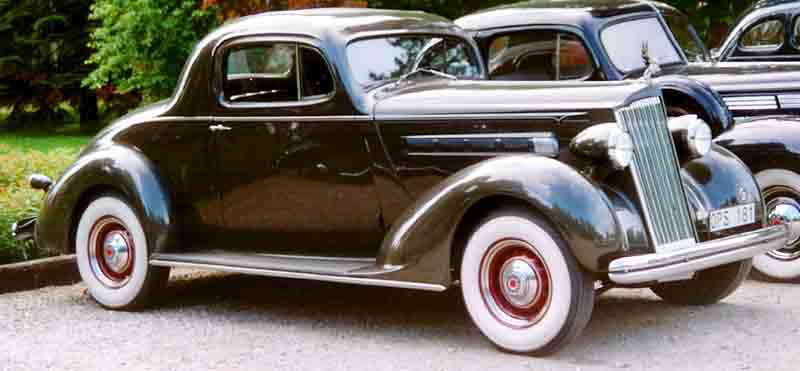
When I went car shopping recently, I noticed a lack of coupes. Trucks, crossovers, and sedans dominated the scene. The only coupes I looked at were the Nissan Altima, Dodge Challenger, and Ford Mustang. I know there are a handful of other car companies that make coupes, but the number of models, and the volume of coupe sales has dwindled sharply from twenty years ago.

The concept of the
coupe originated in the 19th century as a closed carriage with a single
seat. Later it became a term used to describe an enclosed
car with seats for two or three people.
A number of car companies in the 1930s and 1940s made what they called
business coupes, cars with no rear seat built for traveling salespeople, or
folding seats like the kind you get with an extended cab pickup truck. The lack of a back seat is what made the car
different from a two door sedan, which, like a coupe, had two doors but also a
full back seat.

Perhaps the zenith
of the coupe came and went with the original Ford Mustang. Launched exactly 50 years ago, the Mustang
was an instant hit and has since become an American icon. Based on the Ford Falcon sedan, it was
marketed as a 2+2 coupe, the "+2" designating the small, occasional
use backseats.
Growing up, there
were coupes everywhere. By then the
concept of a coupe had merged with a 2 door sedan and the two were used
interchangeably. Just about every
popular car was offered in sedan and coupe form--midsize and full size family
cars like Oldsmobiles, and even smaller cars like the Plymouth Reliant and Ford
Tempo. There were also a number of
sporty cars to compete with the Ford Mustang and its main rival, the Chevy
Camaro--the Toyota Celica, Honda Prelude, Ford Probe, and Mitsubishi Eclipse
were popular at the time. Today, with
the exception of the Mustang and resurrected Camaro, all those cars are
gone.

In 2004, Mercedes launched
the CLS, a "four-door coupe" based on their midsize E platform. It didn't matter that a four-door coupe was
an oxymoron, or that the car was no more capable than an E55. The CLS looked sensational and started a
trend. Today there is no shortage of
four-door coupes, including cars from Audi, BMW, VW, and Jaguar. Ford jumped on the bandwagon with the new
Fusion, as have other sedans, like the new Chrysler 200, and Chevy Impala.
I suspect the primary reason for the demise of coupes is the shift in consumer preferences, but it may also have something to do with the styling and capabilities of the modern sedan. Gone is the square, upright styling of
yesterday's sedans. It's been replaced
by a sleeker look that has blurred the lines, making four door cars as
desirable as the coupes of yesteryear. But while the number of coupes sold in the market continues to diminish, I doubt they will ever completely go away. Coupe styling, no matter how striking, or well executed on a four door car, will always be a compromise. Sedans will always lack the purpose-built look of a two-door sports car or grand tourer. They will never have the wild sense of romance and adventure, never have their names uttered in the same breath as the Porsche 911 or Jaguar XK.
True two-door sports cars and GTs offer the promise of an adventure, a spur of the moment trip to wine country, a drive to the Florida Keys by way of Miami Beach, or weekend getaway to ski. A sedan, even one labeled a coupe, is still a sedan and the automotive equivalent of date night. Yes, there is the promise of adventure, an opportunity to go interesting places, but at the end of the evening you still have to go home and pay the baby sitter.
No comments:
Post a Comment